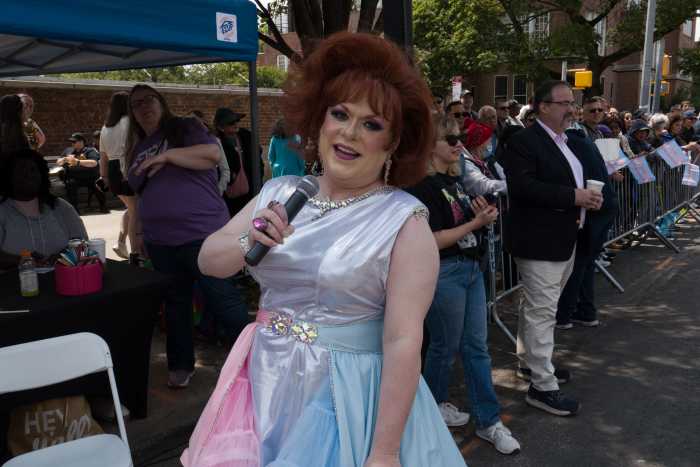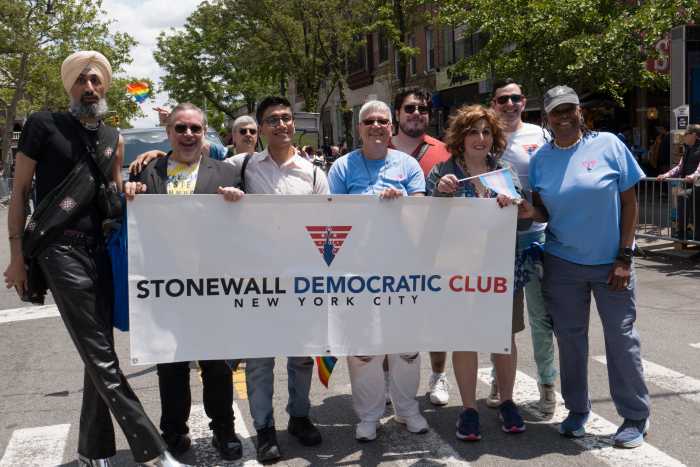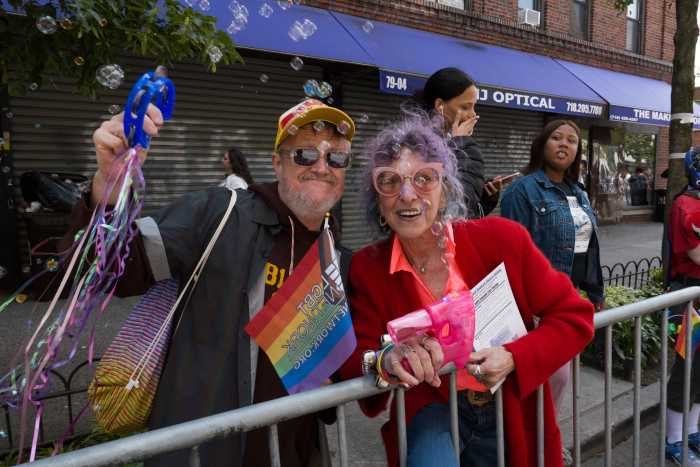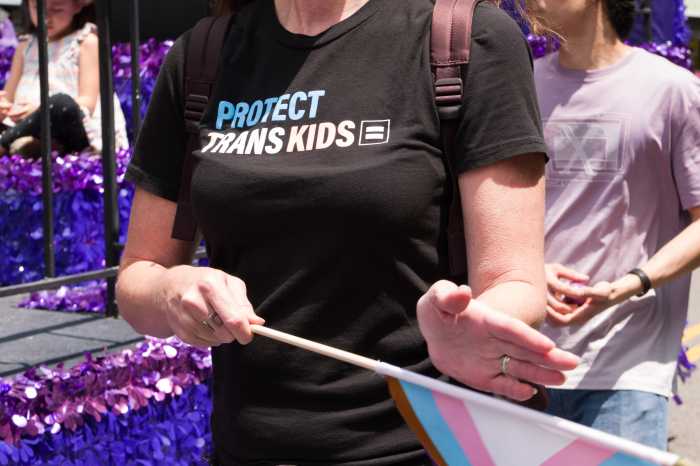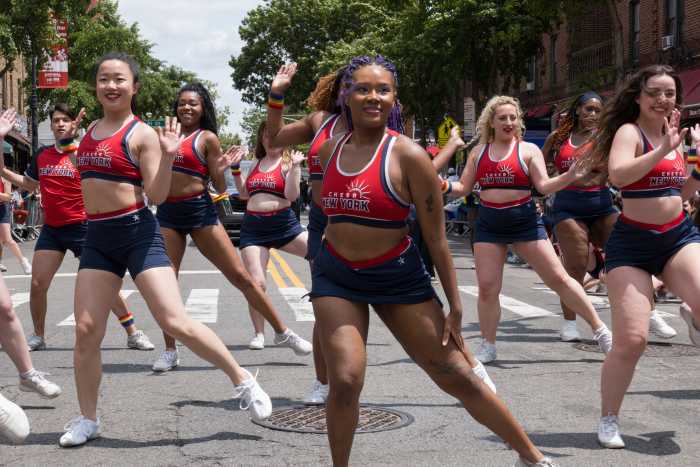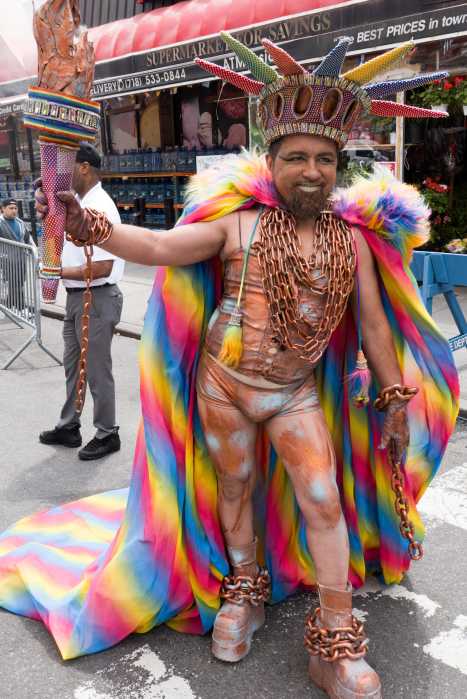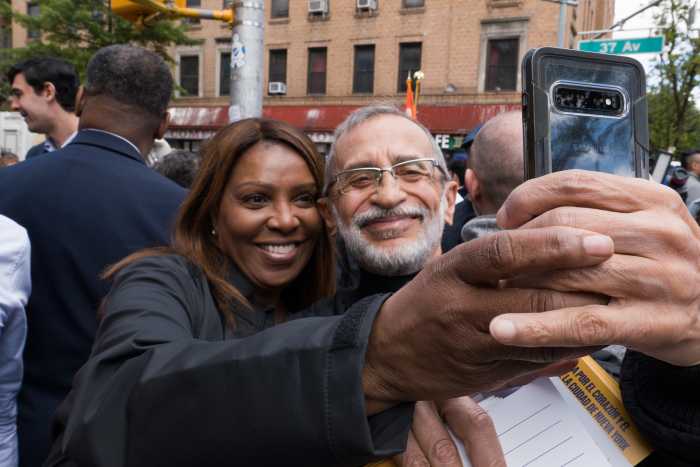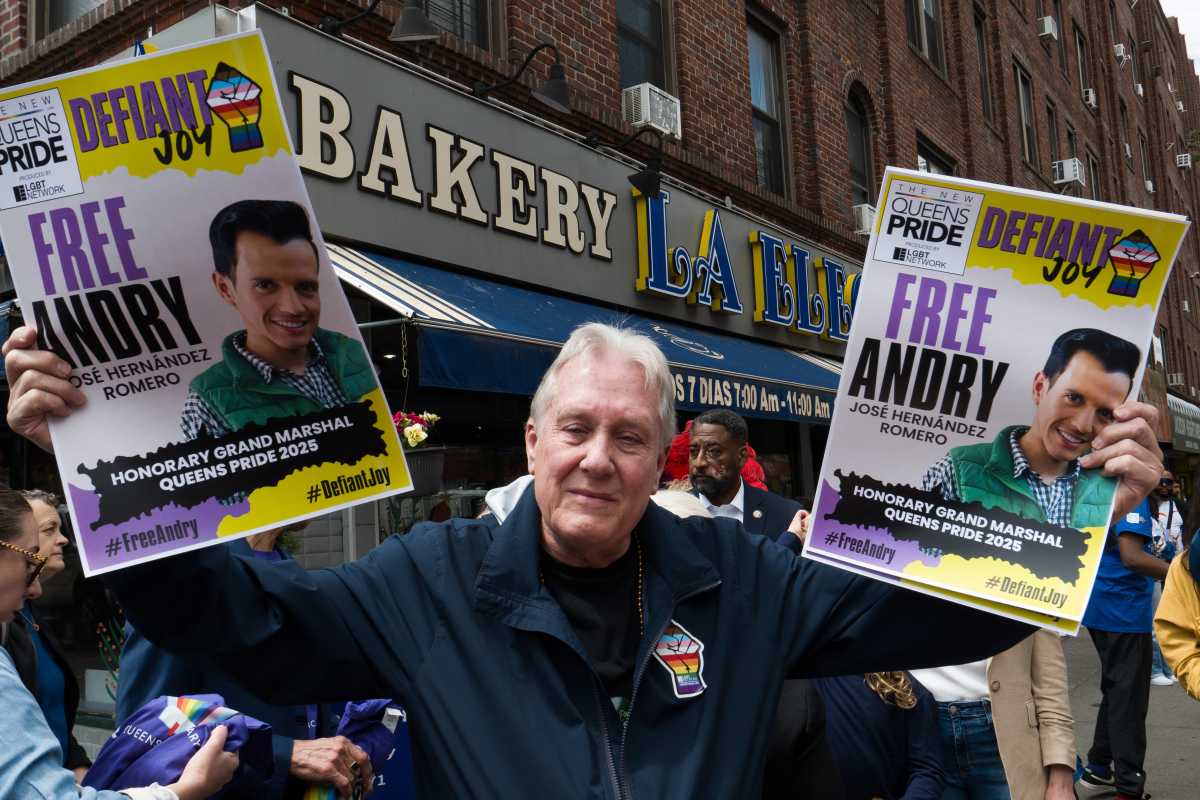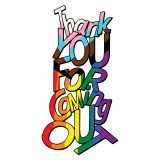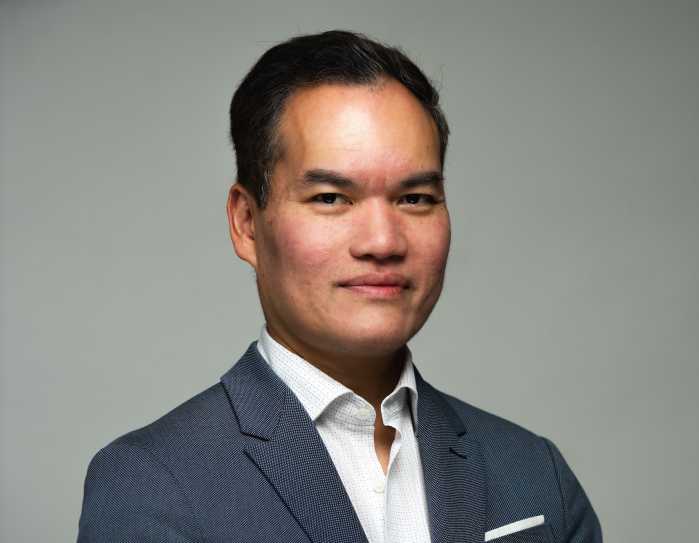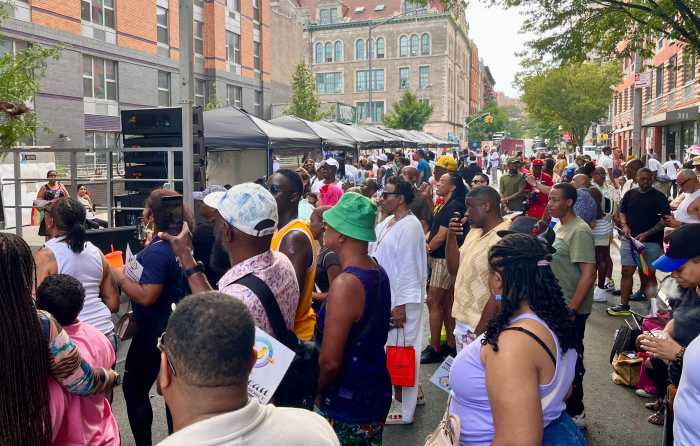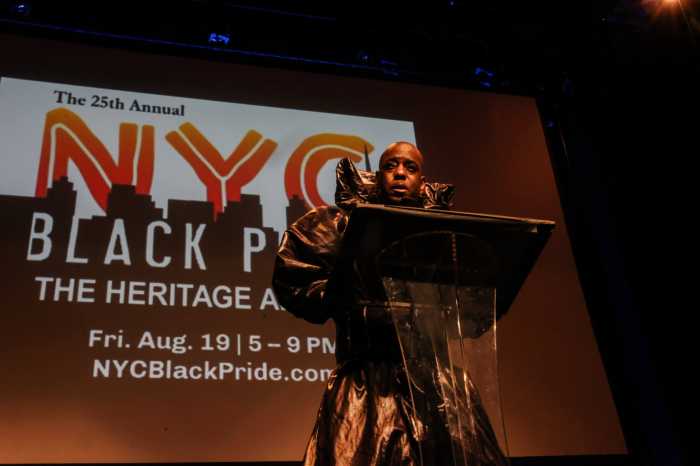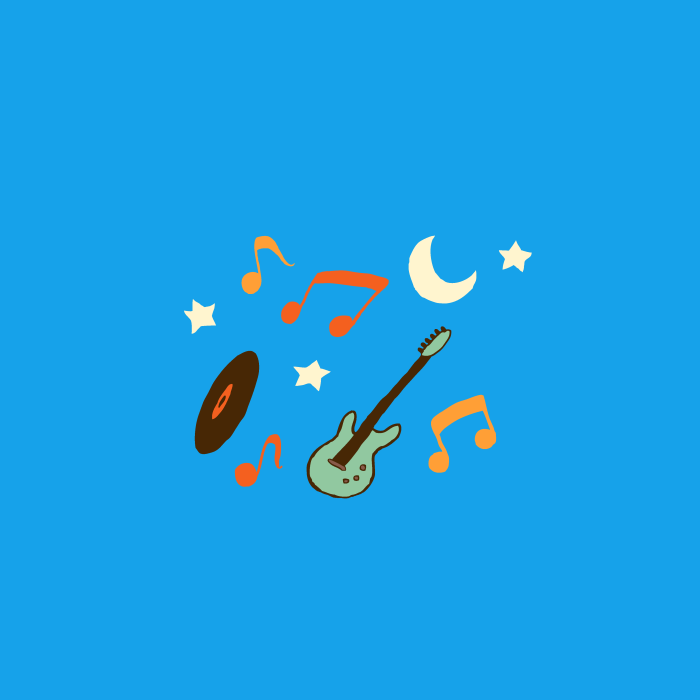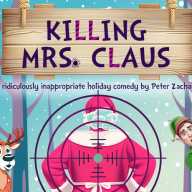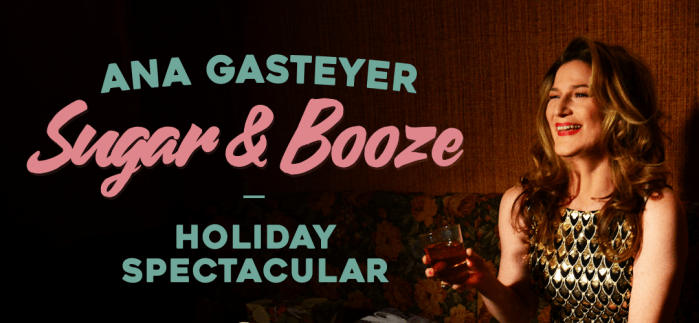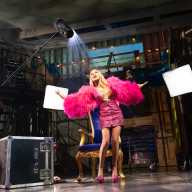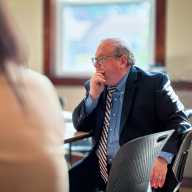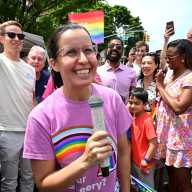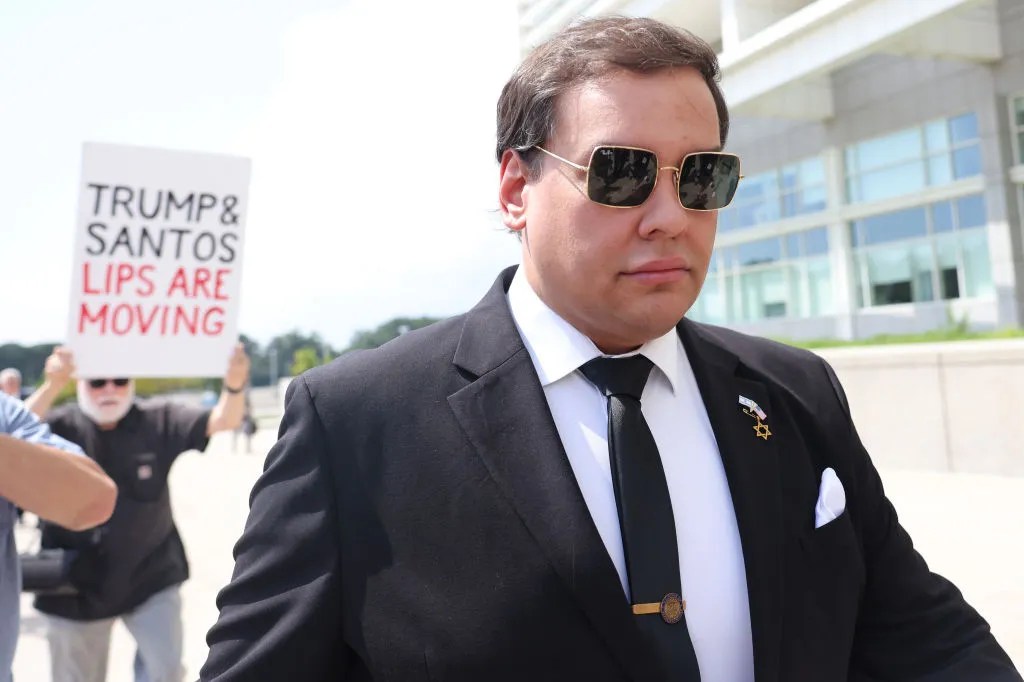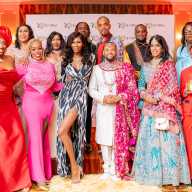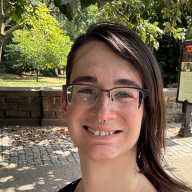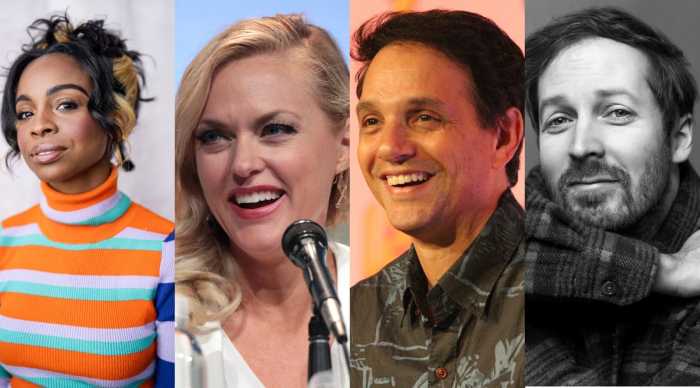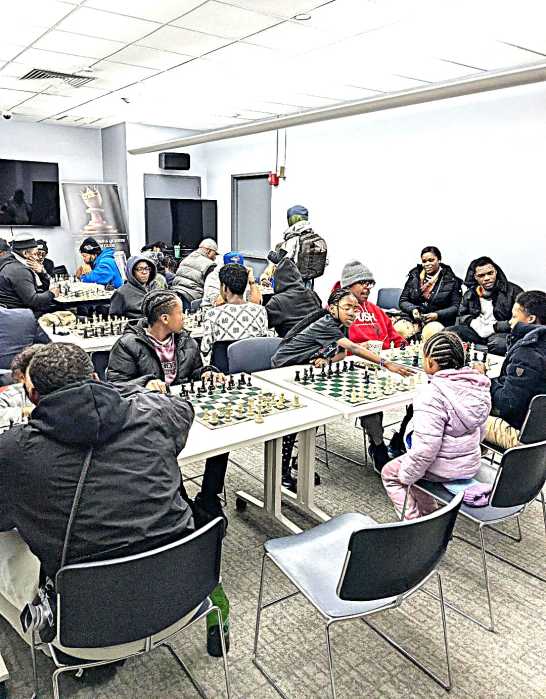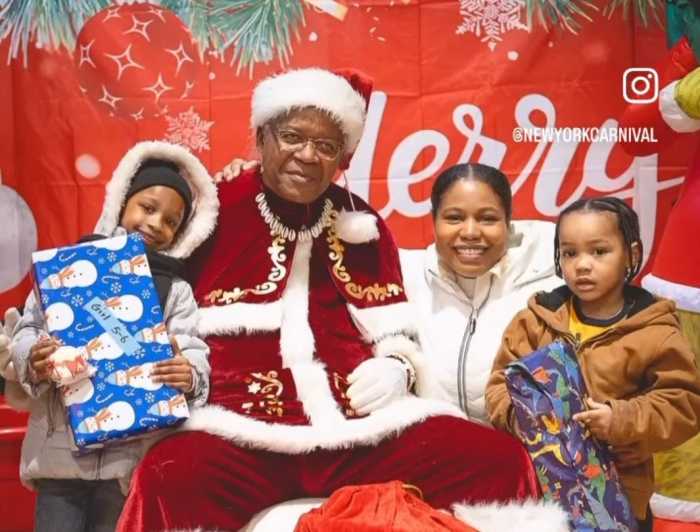S was thrilled this weekend when their new black dress, dotted with pink and red flowers, arrived just in time for the start of Pride Month.
“Pride means full visibility really, and fully owning identity and queerness,” S, 70, a Queens native, told Gay City News. “I identify as non-binary and transgender, and in this society with the level of discord and the fighting going on, it feels more important than ever to just own this, and celebrate the word ‘Pride.’”
S joined tens of thousands of proud LGBTQ participants and allies at New Queens Pride in Jackson Heights on June 1 for its 32nd year.
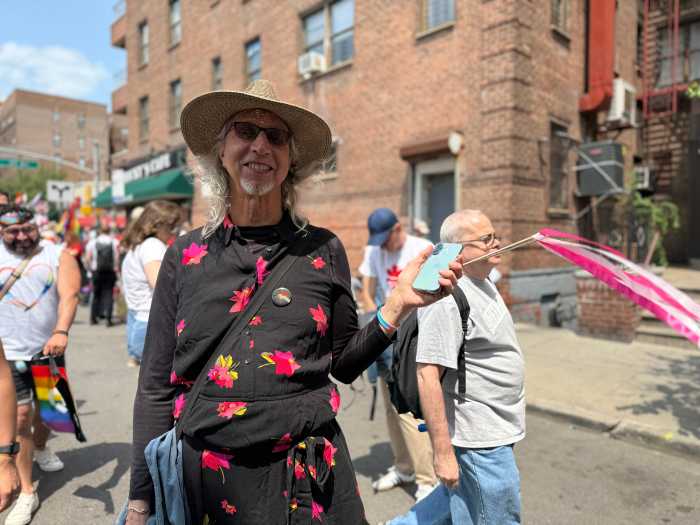
The theme of this year’s event was “defiant joy.” The parade and festival reflected a sense of urgency to protect LGBTQ and immigrant rights across the United States against the backdrop of widespread political attacks against transgender and non-binary Americans, all while celebrating the queer community’s resiliency.
This year’s parade called for the release of Andry Hernández Romero, a gay Venezuelan asylum seeker who was deported to a notorious prison in El Salvador by the Trump administration despite not having a criminal record, and who was made an honorary parade grand marshal.
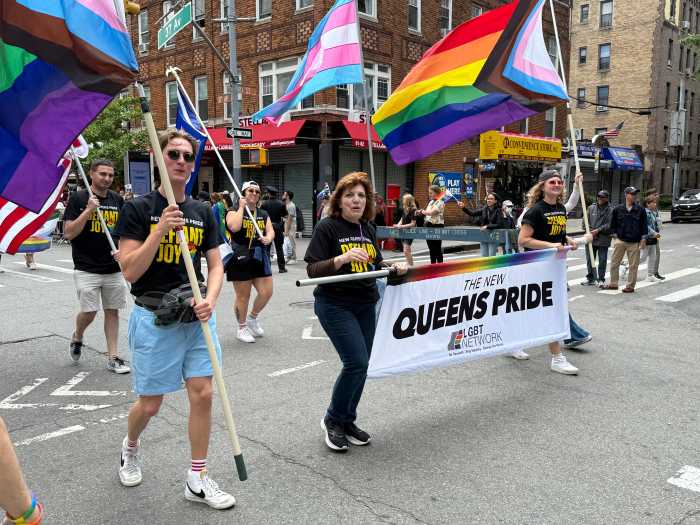
The parade stopped for a moment of silence at the intersection of 37th Avenue and 78th Street, where Julio Rivera, a gay man, was brutally murdered in 1990.
“Let’s be proud, let’s be defiant, let’s be joyful!” LGBT Network president Dr. David Kilmnick told a crowd of onlookers. “And do it for Julio, do it for Andry, and do it for every single LGBTQ person, every single LGBTQ kid.”
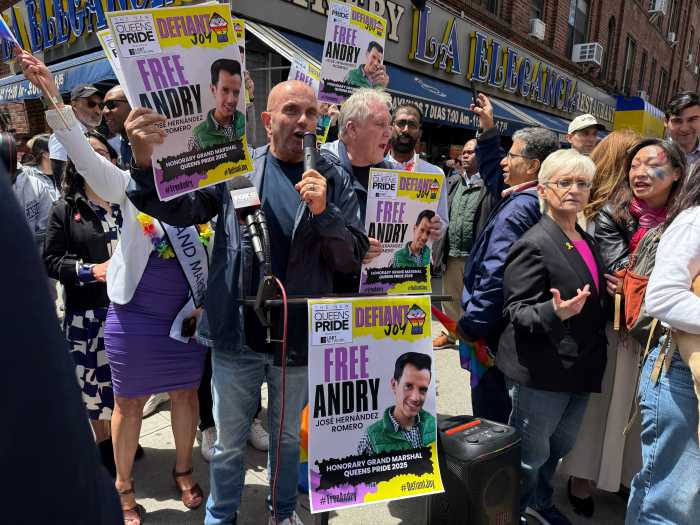
Rivera’s murder, and pushback over the Children of the Rainbow school curriculum, sparked the founding of Queens Pride by former public school teacher and City Councilmember Daniel Dromm and activist Maritza Martinez three years later. The annual event was renamed New Queens Pride after the LGBT Network claimed leadership in 2022.
“We will not give up until Andry is freed from that prison in El Salvador,” Dromm told the crowd. “This is an immigrant community, we stand up for our immigrants, we stand up for our LGBTQ people.”
Congressmember Alexandria Ocasio-Cortez, who represents parts of Queens and the Bronx, also showed up in support of the community.
“Jackson Heights stands up and fights back, and we are proud of our queer community,” Ocasio-Cortez said. “We stand with our trans brothers and sisters and siblings as well.”
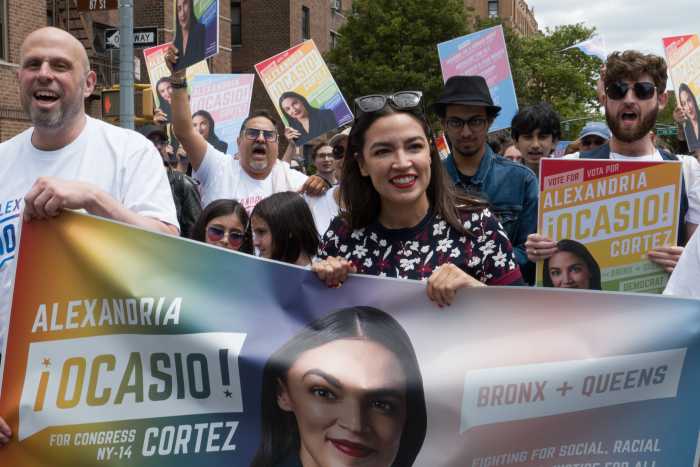
The parade was filled with local organizations like the all-volunteer, LGBTQ-led cheerleading group Cheer New York. It followed 37th Avenue in the heart of one of the most diverse neighborhoods in Queens, ending in an hours-long festival with musical performances.
“We have to fight for our freedom, we have to fight together, and we’re gonna do it with that defiant joy,” said out queer Councilmember Tiffany Cabán, co-chair of the City Council’s LGBTQIA+ caucus.
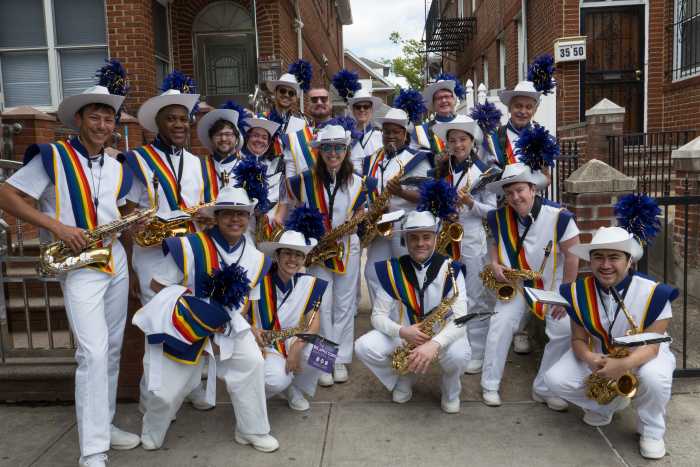
Gay City News asked participants what Pride — and Queens Pride in particular — means to them.
It means “liberation,” said Pariss Roman, who added: “It’s a march, it is a fight against the man. As a queen from Queens you’ve got to show up and show out for community.”
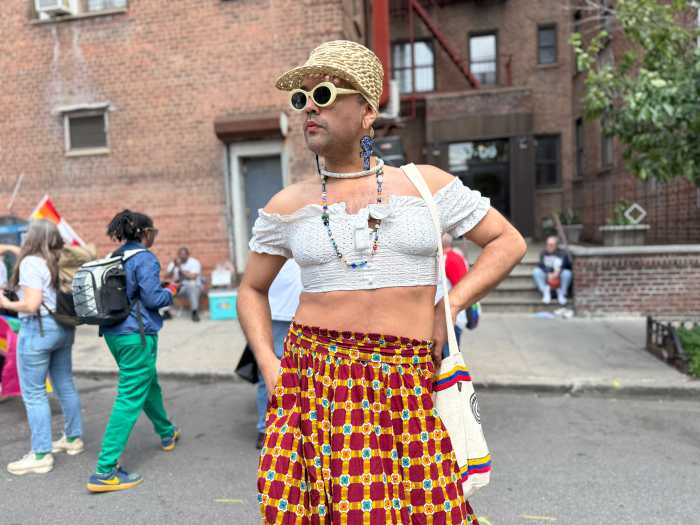
For Lori Caraballo, 56, who remembers attending marches in Manhattan in the 1990s, “Pride means a long, long haul.”
Pointing to her shirt from a 1994 pride march, Caraballo said, “I was here and it was not like this. … There was a lot of opposition, a lot of people telling us ‘you don’t have the right to exist.’ But we’re here and we’re queer, and look at Queens Pride, it’s huge.”
Erika, a 45-year-old trans woman originally from Mexico, told Gay City News in Spanish that “it’s very important for us trans and non-binary people to represent our flag with Pride.”
Erika said she has witnessed increasing hostility towards members of the trans and Latinx community in the past year, which she suspects is partially due to the hostile climate towards trans people across the country.
“I come from a country where [LGBTQ] people live in the shadows, in a very machista environment,” she said. “I have found freedom here in the United States, but now not even here.”
At the same time, Erika looked at the day’s partly-cloudy weather as a metaphor. “Sometimes the sun comes out, sometimes it hides,” she said. “That’s the same thing that’s happening to our community.”
In spite of the gray sky, she is staying positive. “Look at [this festival] today,” she said.
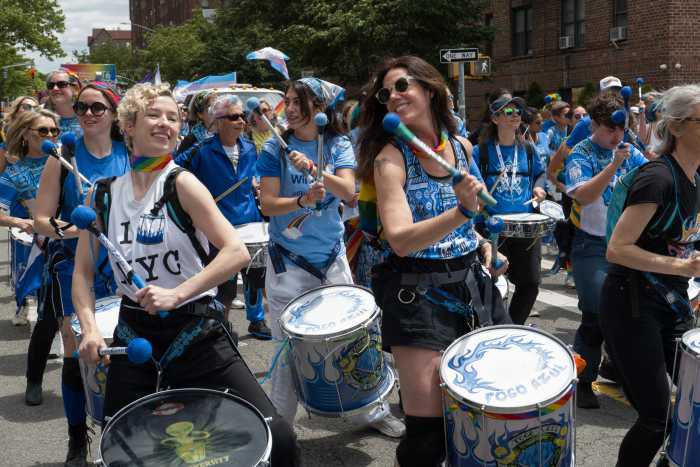
This was the first pride event in New York City for Tomás, 35, since moving to Queens from Argentina with his partner, Gabriel. The couple marched in the parade with Voces Latinas, a non-profit dedicated to reducing the transmission of HIV.
Pride is “about resiliency, standing up to be who you are, where you are, without any apologies to ask for,” Tomás said.
Erica, 26, was proud to wear bright colors to pride, alongside her friend Sydney, 24.
“A lot of the time I just cover myself up from the way I was raised,” she said. That made it special to “style this the way I want to and express myself the way I definitely couldn’t have, even a couple years ago.”

Pride, Erica added, “means standing firm in who you are, and standing by your laurels.”
This was the second year that Melissa Motley, 40, a Jackson Heights resident, brought her almost two-year-old son Milo to Queens Pride.
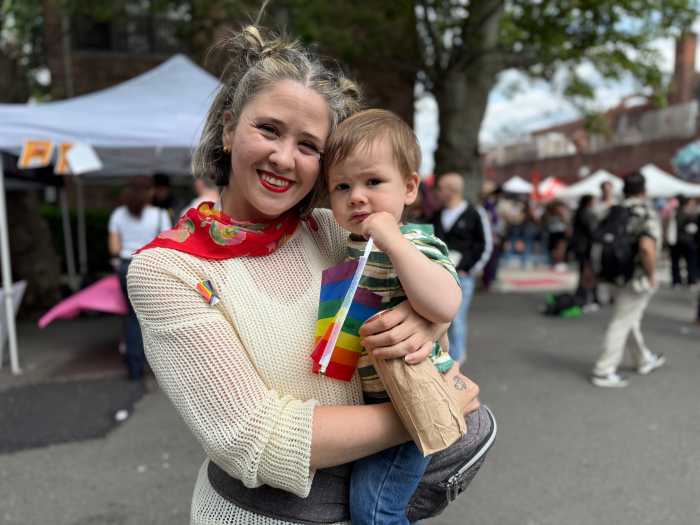
“As a mom, Pride means participating in supporting every single human being that deserves love and respect, and teaching my baby that that is the foundation of life — respect, love, joy, peace and happiness,” Motley said. “He will grow up at Queens Pride; I want him to know nothing else.”
